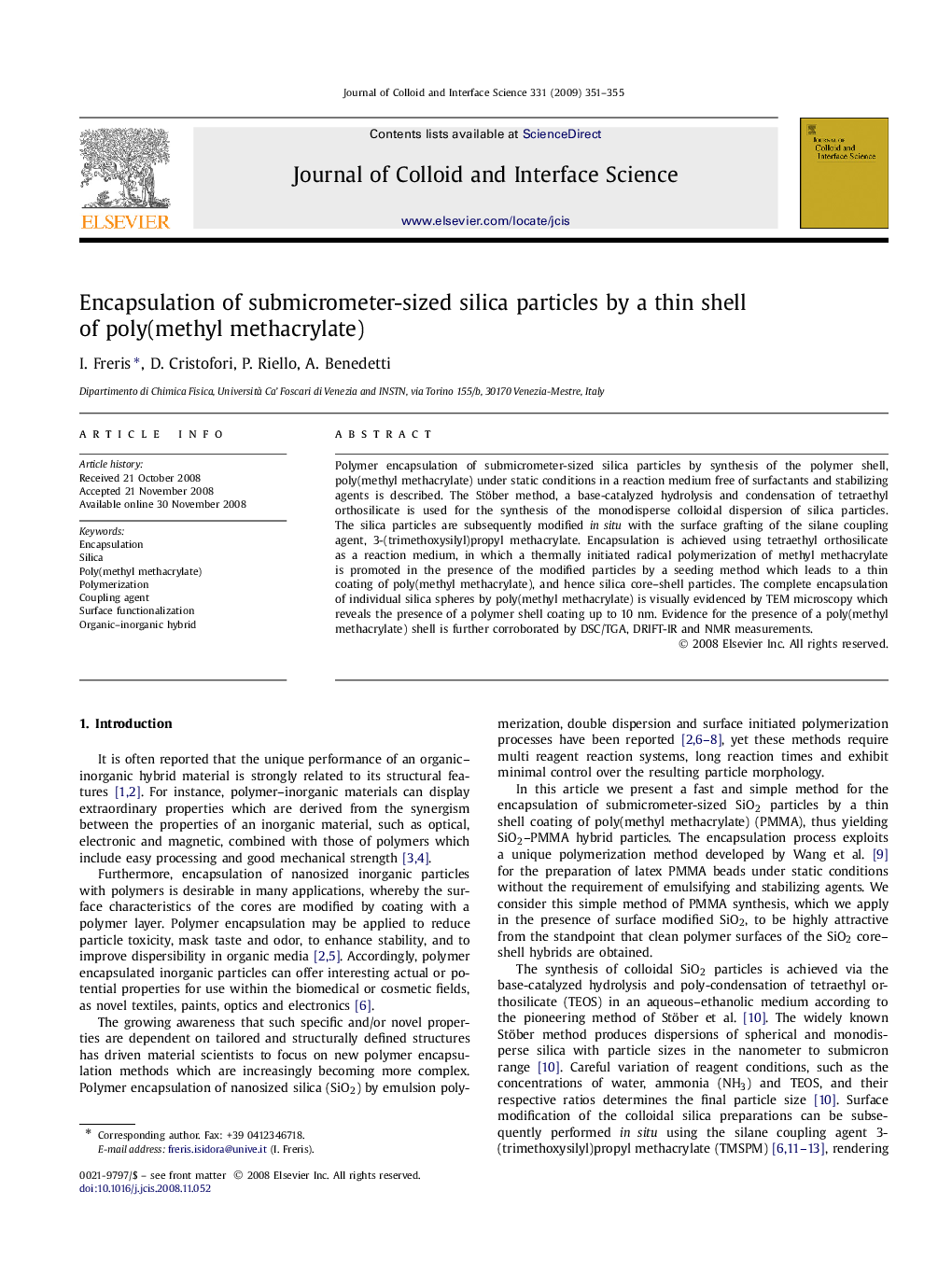| Article ID | Journal | Published Year | Pages | File Type |
|---|---|---|---|---|
| 610829 | Journal of Colloid and Interface Science | 2009 | 5 Pages |
Polymer encapsulation of submicrometer-sized silica particles by synthesis of the polymer shell, poly(methyl methacrylate) under static conditions in a reaction medium free of surfactants and stabilizing agents is described. The Stöber method, a base-catalyzed hydrolysis and condensation of tetraethyl orthosilicate is used for the synthesis of the monodisperse colloidal dispersion of silica particles. The silica particles are subsequently modified in situ with the surface grafting of the silane coupling agent, 3-(trimethoxysilyl)propyl methacrylate. Encapsulation is achieved using tetraethyl orthosilicate as a reaction medium, in which a thermally initiated radical polymerization of methyl methacrylate is promoted in the presence of the modified particles by a seeding method which leads to a thin coating of poly(methyl methacrylate), and hence silica core–shell particles. The complete encapsulation of individual silica spheres by poly(methyl methacrylate) is visually evidenced by TEM microscopy which reveals the presence of a polymer shell coating up to 10 nm. Evidence for the presence of a poly(methyl methacrylate) shell is further corroborated by DSC/TGA, DRIFT-IR and NMR measurements.
Graphical abstractThin shell coatings of poly(methyl methacrylate) were formed on the surface of functionalized silica particles by polymerization of methyl methacrylate in a medium of tetraethyl orthosilicate under static conditions.Figure optionsDownload full-size imageDownload as PowerPoint slide
